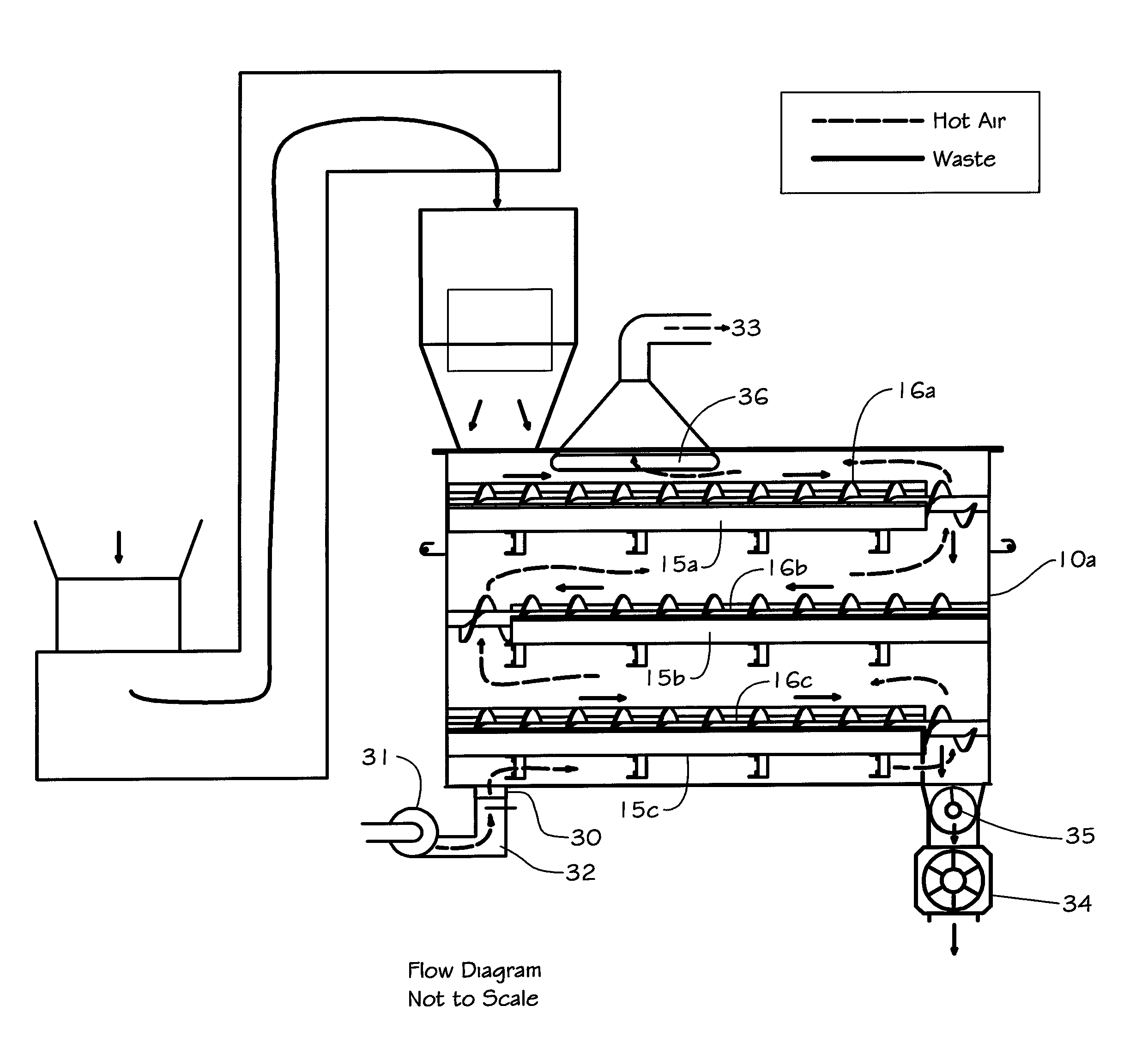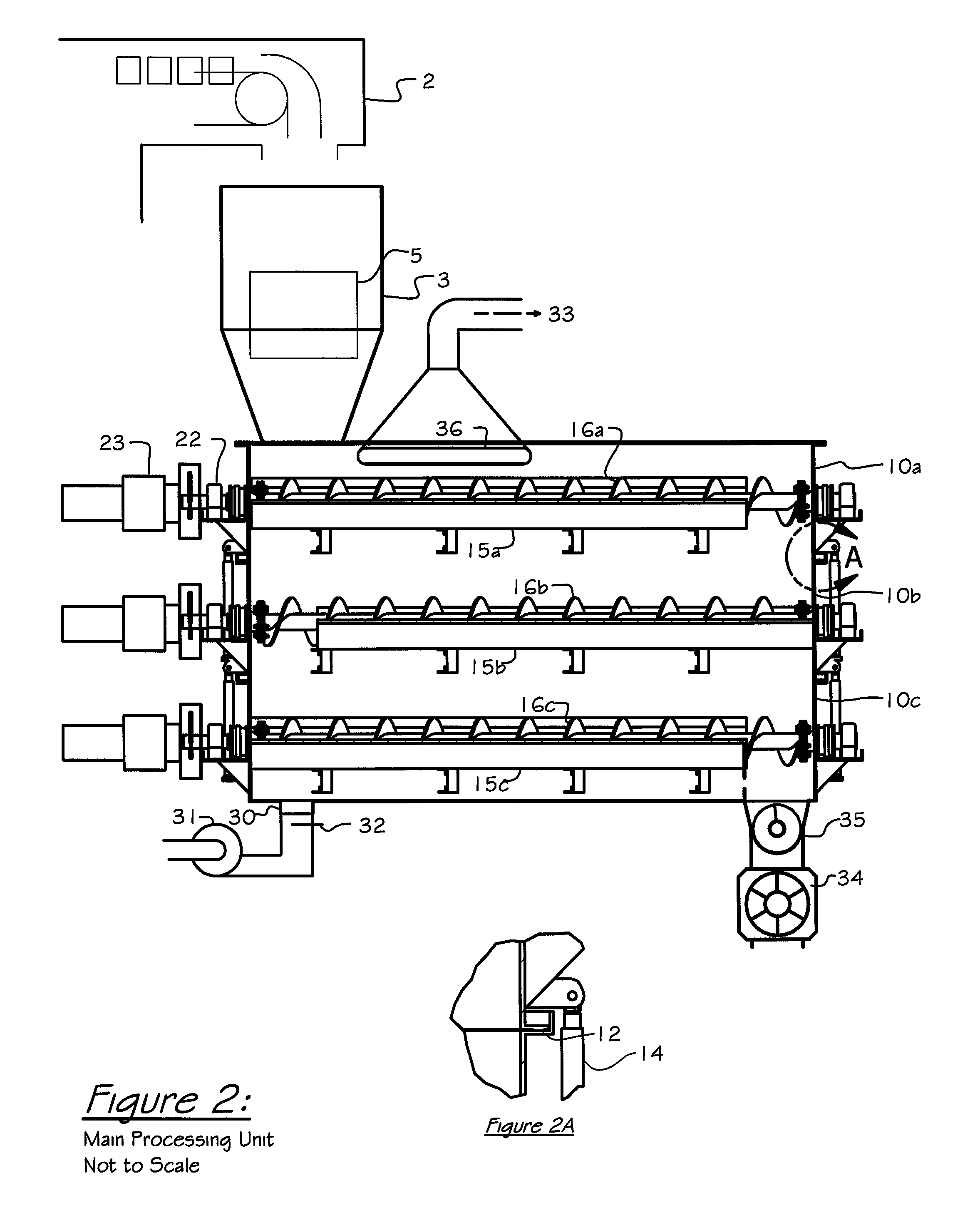Animal waste processing
a technology for animal waste and processing, applied in the field of animal waste processing, can solve the problems of stalls with a tendency to ball up and plug augers, respiratory problems of animals, waste hay, etc., and achieve the effect of eliminating foul odors and reducing lumps
- Summary
- Abstract
- Description
- Claims
- Application Information
AI Technical Summary
Benefits of technology
Problems solved by technology
Method used
Image
Examples
Embodiment Construction
[0027]With reference to the drawings, the processing device of this invention is generally designated by the reference number 10. Device 10 includes a base unit 11 that can be mounted with bolts onto a concrete pad that rests upon the floor of a processing plant and supports the various components of device 10.
[0028]Device 10 is essentially a rectangular structure that is divided horizontally into one or more separate sections, three (3) sections are shown and indicated by the sub-reference numbers 10a, 10b and 10c. Each section nests into the section below and the area between the sections is sealed with a high temperature sealing gasket, 12. Hydraulic lifting pistons, 14a, 14b, 14c and 14d, located at the four corners of device 10 can be electronically operated to lift each of the top two sections (10a &10b) either separately or together to provide an opening between the sections for access to the components within.
[0029]Inside each section of device 10 is a tray of troughs, 15a, ...
PUM
| Property | Measurement | Unit |
|---|---|---|
| movement | aaaaa | aaaaa |
| temperature | aaaaa | aaaaa |
| areas | aaaaa | aaaaa |
Abstract
Description
Claims
Application Information
 Login to View More
Login to View More - R&D
- Intellectual Property
- Life Sciences
- Materials
- Tech Scout
- Unparalleled Data Quality
- Higher Quality Content
- 60% Fewer Hallucinations
Browse by: Latest US Patents, China's latest patents, Technical Efficacy Thesaurus, Application Domain, Technology Topic, Popular Technical Reports.
© 2025 PatSnap. All rights reserved.Legal|Privacy policy|Modern Slavery Act Transparency Statement|Sitemap|About US| Contact US: help@patsnap.com



